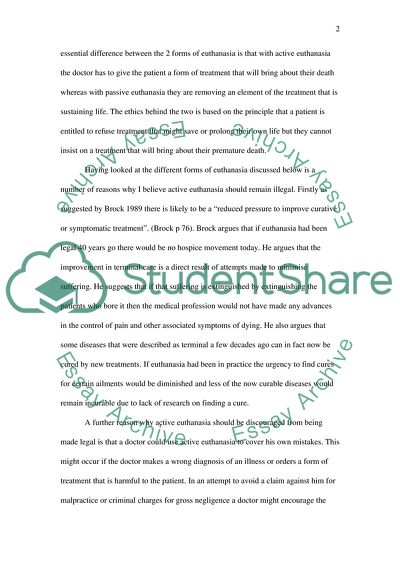Cite this document
(Illegal Active Euthanasia Essay Example | Topics and Well Written Essays - 1500 words, n.d.)
Illegal Active Euthanasia Essay Example | Topics and Well Written Essays - 1500 words. https://studentshare.org/medical-science/1706470-active-euthanasia-should-be-illegal
Illegal Active Euthanasia Essay Example | Topics and Well Written Essays - 1500 words. https://studentshare.org/medical-science/1706470-active-euthanasia-should-be-illegal
(Illegal Active Euthanasia Essay Example | Topics and Well Written Essays - 1500 Words)
Illegal Active Euthanasia Essay Example | Topics and Well Written Essays - 1500 Words. https://studentshare.org/medical-science/1706470-active-euthanasia-should-be-illegal.
Illegal Active Euthanasia Essay Example | Topics and Well Written Essays - 1500 Words. https://studentshare.org/medical-science/1706470-active-euthanasia-should-be-illegal.
“Illegal Active Euthanasia Essay Example | Topics and Well Written Essays - 1500 Words”. https://studentshare.org/medical-science/1706470-active-euthanasia-should-be-illegal.


